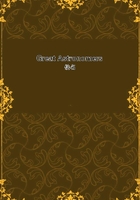
第72章 JOHN HERSCHEL.(5)
Influenced by the desire to examine these objects, Sir John Herschel determined to take his great telescope to a station in the southern hemisphere, and thus complete his survey of the sidereal heavens. The latitude of the Cape of Good Hope is such that a suitable site could be there found for his purpose. The purity of the skies in South Africa promised to provide for the astronomer those clear nights which his delicate task of surveying the nebulae would require.
On November 13, 1833, Sir John Herschel, who had by this time received the honour of knighthood from William IV., sailed from Portsmouth for the Cape of Good Hope, taking with him his gigantic instruments. After a voyage of two months, which was considered to be a fair passage in those days, he landed in Table Bay, and having duly reconnoitred various localities, he decided to place his observatory at a place called Feldhausen, about six miles from Cape Town, near the base of the Table Mountain. A commodious residence was there available, and in it he settled with his family. Atemporary building was erected to contain the equatorial, but the great twenty-foot telescope was accommodated with no more shelter than is provided by the open canopy of heaven.
As in his earlier researches at home, the attention of the great astronomer at the Cape of Good Hope was chiefly directed to the measurement of the relative positions and distances apart of the double stars, and to the close examination of the nebulae. In the delineation of the form of these latter objects Herschel found ample employment for his skilful pencil. Many of the drawings he has made of the celestial wonders in the southern sky are admirable examples of celestial portraiture.
The number of the nebulae and of those kindred objects, the star clusters, which Herschel studied in the southern heavens, during four years of delightful labour, amount in all to one thousand seven hundred and seven. His notes on their appearance, and the determinations of their positions, as well as his measurements of double stars, and much other valuable astronomical research, were published in a splendid volume, brought out at the cost of the Duke of Northumberland. This is, indeed, a monumental work, full of interesting and instructive reading for any one who has a taste for astronomy.
Herschel had the good fortune to be at the Cape on the occasion of the periodical return of Halley's great comet in 1833. To the study of this body he gave assiduous attention, and the records of his observations form one of the most interesting chapters in that remarkable volume to which we have just referred.
[PLATE: COLUMN AT FELDHAUSEN, CAPE TOWN, to commemorate Sir John Herschel's survey of the Southern Heavens.]
Early in 1838 Sir John Herschel returned to England. He had made many friends at the Cape, who deeply sympathised with his self-imposed labours while he was resident among them. They desired to preserve the recollection of this visit, which would always, they considered, be a source of gratification in the colony. Accordingly, a number of scientific friends in that part of the world raised a monument with a suitable inscription, on the spot which had been occupied by the great twenty-foot reflector at Feldhausen.
His return to England after five years of absence was naturally an occasion for much rejoicing among the lovers of astronomy. He was entertained at a memorable banquet, and the Queen, at her coronation, made him a baronet. His famous aunt Caroline, at that time aged eighty, was still in the enjoyment of her faculties, and was able to estimate at its true value the further lustre which was added to the name she bore. But there is reason to believe that her satisfaction was not quite unmixed with other feelings. With whatever favour she might regard her nephew, he was still not the brother to whom her life had been devoted. So jealous was this vigorous old lady of the fame of the great brother William, that she could hardly hear with patience of the achievements of any other astronomer, and this failing existed in some degree even when that other astronomer happened to be her illustrious nephew.
With Sir John Herschel's survey of the Southern Hemisphere it may be said that his career as an observing astronomer came to a close. He did not again engage in any systematic telescopic research. But it must not be inferred from this statement that he desisted from active astronomical work. It has been well observed that Sir John Herschel was perhaps the only astronomer who has studied with success, and advanced by original research, every department of the great science with which his name is associated. It was to some other branches of astronomy besides those concerned with looking through telescopes, that the rest of the astronomer's life was to be devoted.
To the general student Sir John Herschel is best known by the volume which he published under the title of "Outlines of Astronomy." This is, indeed, a masterly work, in which the characteristic difficulties of the subject are resolutely faced and expounded with as much simplicity as their nature will admit. As a literary effort this work is admirable, both on account of its picturesque language and the ennobling conceptions of the universe which it unfolds. The student who desires to become acquainted with those recondite departments of astronomy, in which the effects of the disturbing action of one planet upon the motions of another planet are considered, will turn to the chapters in Herschel's famous work on the subject. There he will find this complex matter elucidated, without resort to difficult mathematics. Edition after edition of this valuable work has appeared, and though the advances of modern astronomy have left it somewhat out of date in certain departments, yet the expositions it contains of the fundamental parts of the science still remain unrivalled.